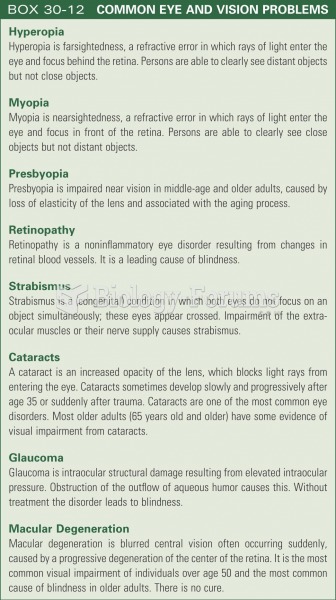Answer to Question 1
D
Feedback
A Incorrect. Vision screenings on 3- to 4-year-old children that produce scores lower than 15/30 or a 5 feet difference between eyes suggest referral, not a 1 foot difference.
B Incorrect. Vision screenings on 3- to 4-year-old children that produce scores lower than 15/30 or a 5 foot difference between eyes suggest referral, not a 2 foot difference.
C Incorrect. Vision screenings on 3- to 4-year-old children that produce scores lower than 15/30 or a 5 foot difference between eyes suggest referral, not a 3 foot difference.
D Correct. Three-to-4-year-old children should be able to achieve a score of 15/30 to 20/30 on the Allen test. Each eye should have the same score. If the score for the child's right and left eyes differ by 5 feet or more or either or both eyes score less than 15/30, refer the child to the ophthalmologist.
Answer to Question 2
C
Feedback
A Incorrect. This response encourages the parents to further express their feelings but does not explain the rationale for the child's behavior.
B Incorrect. Immobility deprives the child of a natural outlet for feelings. This child's behavior is a normal response to being immobilized and does not require intervention of a psychologist.
C Correct. Children who are immobilized may exhibit a variety of psychological responses. The child may become angry, uncooperative, or engage in aggressive behaviors (especially toward the caregivers). It is important for the nurse to reassure caregivers that they should not take it personally. The child is displacing anger on them because they are safe targets, safer than the physicians and nurses.
D Incorrect. This is not a helpful response because the parents are asking the nurse for an explanation of the child's anger.







